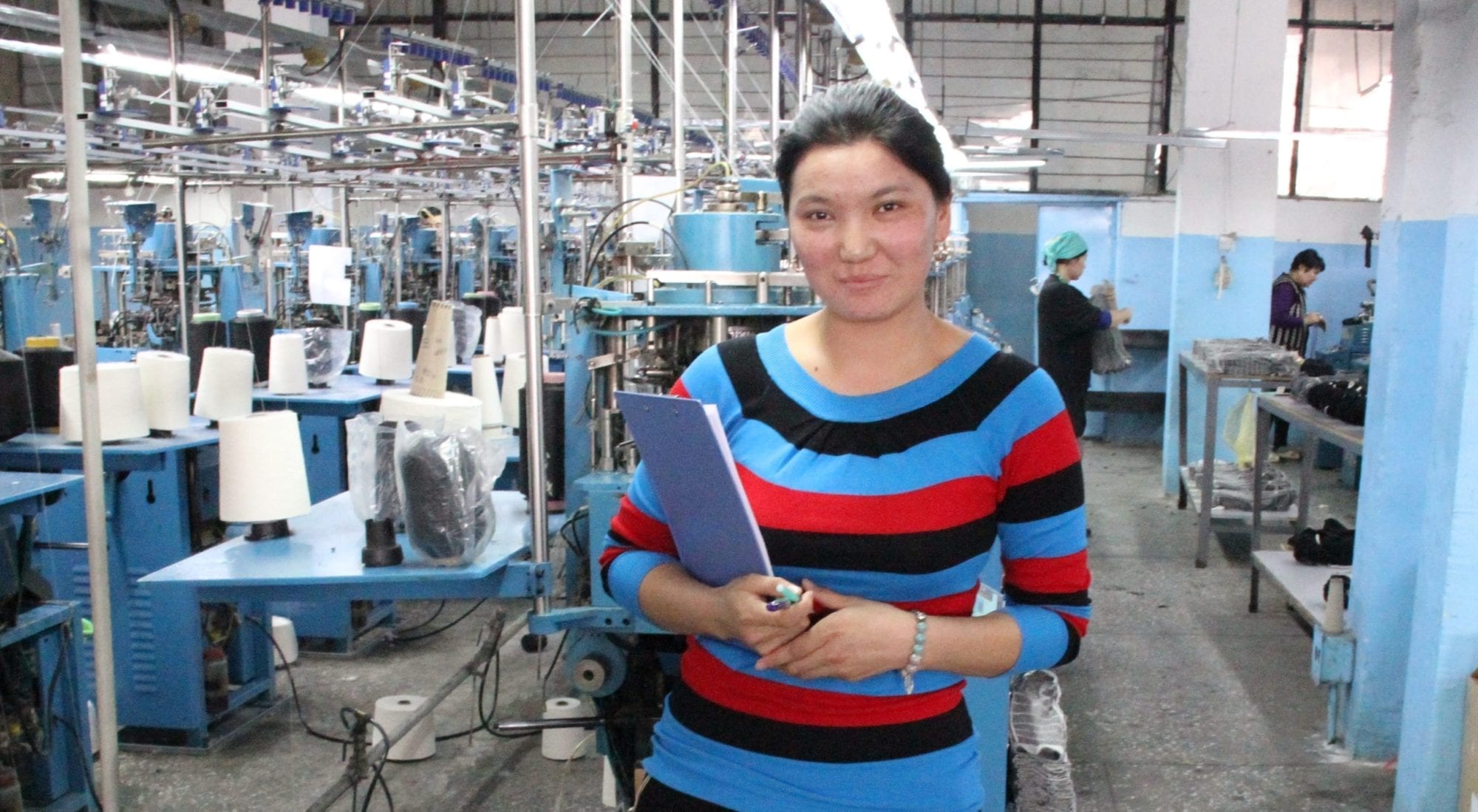Kymbat Sherimbayeva was born in Naryn Oblast, a mountainous and very cold region of Kyrgyzstan where most people support themselves through cattle breeding. Seven years ago, 18-year-old Sherimbayeva left her village for Bishkek, Kyrgyzstan’s capital, seeking work.
Youth un- and underemployment stands at 55 percent in Kyrgyzstan. Most young people feel forced to migrate to Kazakhstan, Korea, Russia, Turkey or other countries in search of work, but some young people like Sherimbayeva hope to build their futures closer to home.
After arriving in Bishkek, Sherimbayeva found a job as a knitter at a hosiery factory, where she was soon promoted to head of quality control.
While working at the factory, Sherimbayeva says, she and her some 200 coworkers—of whom 90 percent are between the ages of 18 and 25—became increasingly concerned about inadequate wages and poor safety and health conditions.
With the help of trainings provided by the Garment Workers’ Union of Kyrgyzstan, with Solidarity Center support, workers at the factory realized they could negotiate improvements with management much more effectively as a group than as individuals. “We are stronger when we are together,” says Sherimbayeva.
Workers identified several activist leaders, including Sherimbayeva, who helped organize their coworkers into a union local. This year, workers are negotiating their first agreement with their employer, focusing on better wages and benefits. Sherimbayeva says that workers’ need higher wages because the average monthly salary of $200 does not cover basic expenses. She also hopes to help achieve for her co-workers paid sick leave and a year-end bonus, which are common to workers in Kyrgyzstan but not available to workers at their factory.
Since she and her co-workers organized, Sherimbayeva says they have found it much easier to negotiate improvements with factory management, even before a formal agreement is in effect. For example, in consultation with the union, factory management developed safety instructions for all departments and trained workers on those procedures; hired a local occupational safety and health service; provided protective clothing and other personal safety equipment; and now displays occupational safety and health information in prominent places throughout the factory building.
“Our position is much stronger concerning our labor as well as human rights. Together, we are able to defend workers in a much more effective way,” she says.

